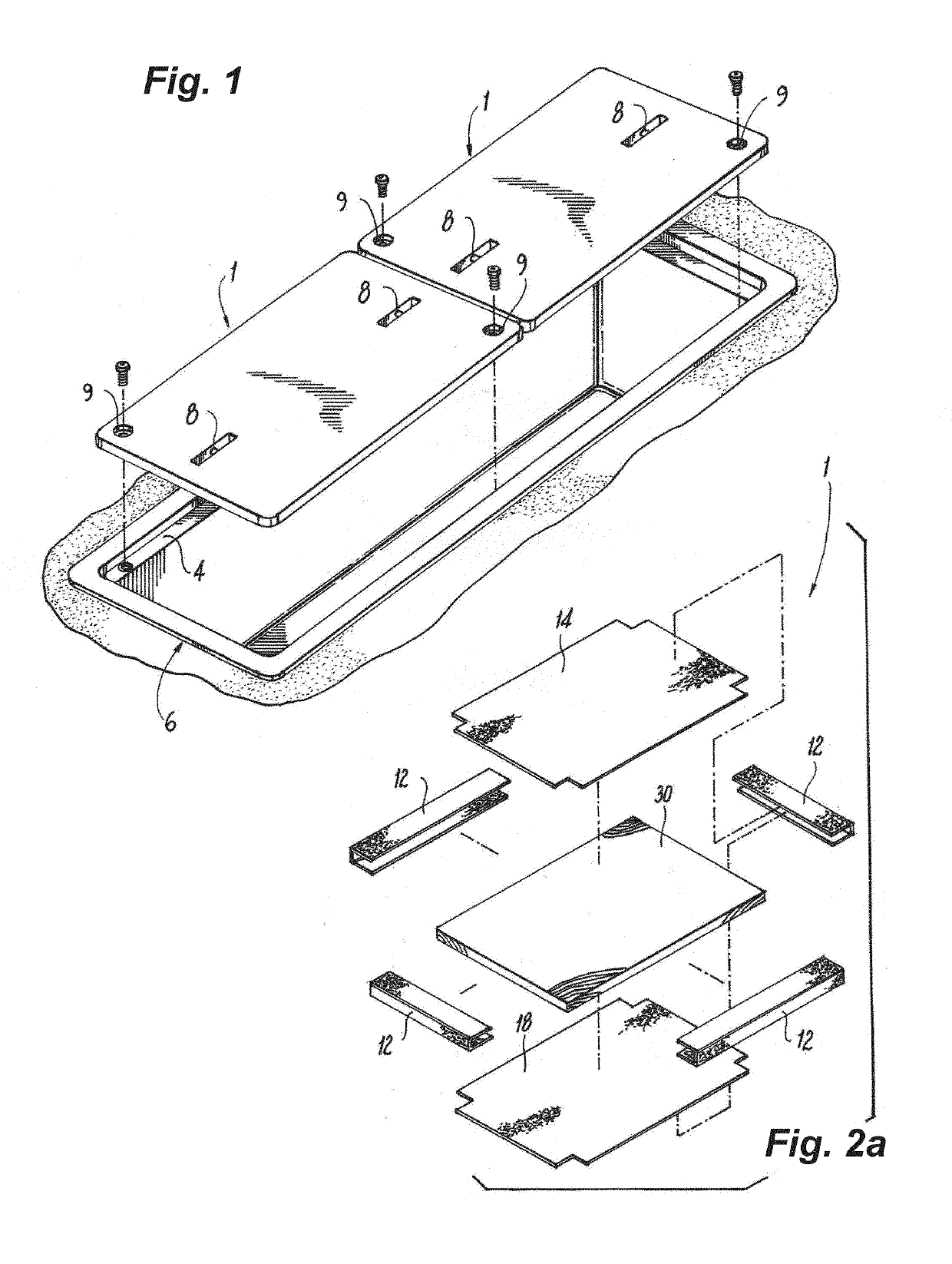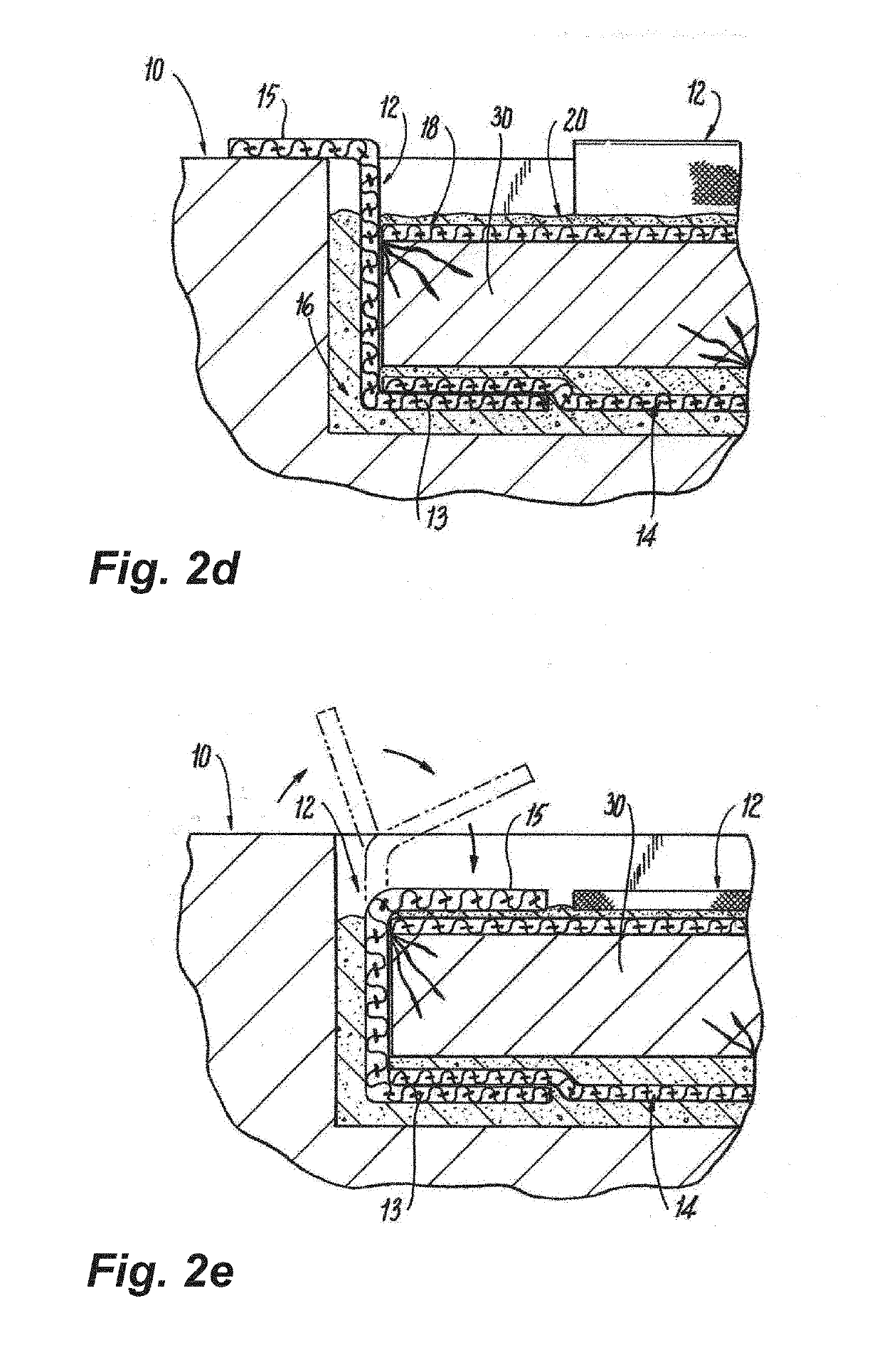Lightweight molded cover
a technology of molded covers and covers, applied in the field of covers, can solve the problems of not supporting one or both ends of each cover, plates with sufficient thickness to support vehicle traffic, and large spans, etc., and achieve the effect of high r-value materials
- Summary
- Abstract
- Description
- Claims
- Application Information
AI Technical Summary
Benefits of technology
Problems solved by technology
Method used
Image
Examples
Embodiment Construction
[0024]FIG. 1 shows a trench lined with a trench liner 6 and covered with covers 1 according to an embodiment of the disclosure. Trench liner 6 is designed to be installed below ground, for example, beneath a roadway, a sidewalk, or a lawn with the cover 1 flush with the ground surface. The top edges of the trench liner 6 include shoulders 4. One or more trench covers 1 are adapted to fit over the trench with their respective edges supported by shoulders 4. According to one aspect of the disclosure, instead of being supported by shoulders, cover 1 spans the trench and is supported by the ground surface on either side of the trench. Cover 1 may include lifting handles or lifting pins 8.
[0025]Bolts may be provided in bolt holes 9 to secure cover 1 onto collar 4. Bolts may have a security feature such as a head requiring a specialized tool, for example, a pentagonal shape, to discourage unauthorized persons from tampering with the vault or its contents. Cover 1 may have a textured top s...
PUM
| Property | Measurement | Unit |
|---|---|---|
| density | aaaaa | aaaaa |
| density | aaaaa | aaaaa |
| apparent density | aaaaa | aaaaa |
Abstract
Description
Claims
Application Information
 Login to View More
Login to View More - Generate Ideas
- Intellectual Property
- Life Sciences
- Materials
- Tech Scout
- Unparalleled Data Quality
- Higher Quality Content
- 60% Fewer Hallucinations
Browse by: Latest US Patents, China's latest patents, Technical Efficacy Thesaurus, Application Domain, Technology Topic, Popular Technical Reports.
© 2025 PatSnap. All rights reserved.Legal|Privacy policy|Modern Slavery Act Transparency Statement|Sitemap|About US| Contact US: help@patsnap.com



